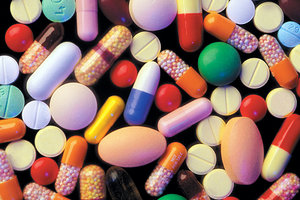The board of trustees of the American Psychiatric Association recently approved the fifth edition of the Diagnostic and Statistical Manual of Mental Disorders, known as DSM-V.1 The first edition, DSM-I, was published in 1952 and featured descriptions of 106 disorders.
Why the explosion in the number of mental health conditions in barely over half a century? Scientific breakthroughs? Hardly. It is the medicalization of American society. Psychiatrist Thomas S. Szasz4 has written extensively on the topic. Medicalization is a process or tendency whereby phenomena that originally belonged to another field, such as education, law, religion and so on, are redefined as medical phenomena.5-6 Thus, medicalization is a process by which the medical profession asserts authority over a sphere of life previously overseen by guardians of morality.
In 2001, Szasz4 described the ideologies of legitimization: theocracy (God's will); democracy (consent of the governed); socialism (economic equality); and pharmacracy (the therapeutic state). The emergence of the therapeutic state is a product of the 20th century.
From 1776 to 1914, the federal government played no role in civilian medicine. In 1914, the first antinarcotic legislation was enacted. As the century progressed, the federal government's role in medicine exploded. Szasz offers the following statistics:
- In 1950, funding for the National Institute for Mental Health was less than $1 million. In 1992, it reached $1 billion.
- In 1965, when Medicare and Medicaid were enacted, their cost was approximately $65 billion. In 1993, it was nearly $939 billion.
- Between 1960 and 1998, the average annual public expenditure on health care increased more than one hundred times, from $35 to $3,633.
- In addition to these expenditures, government spending in general increased from a budget of $13.6 billion in fiscal year 1941 to $1.65 trillion in FY 1998.
 One of Szasz's greatest insights is his description of the process whereby coercion is transformed into medical therapy: 1) The subject's "condition" is diagnosed as a disease. 2) The intervention imposed is defined as a treatment. 3) Legislators and judges ratify these categorizations as "diseases" and "treatments."
One of Szasz's greatest insights is his description of the process whereby coercion is transformed into medical therapy: 1) The subject's "condition" is diagnosed as a disease. 2) The intervention imposed is defined as a treatment. 3) Legislators and judges ratify these categorizations as "diseases" and "treatments."
The traditional role of coercion as a public health measure dealt with the transmission of communicable diseases. Persons with communicable diseases were quarantined (as in measles) or banished (as in leprosy). Yet as a growing number of behaviors were defined as "diseases," coerced treatment was added to the armamentarium of public health and state authority.
Examples of medicalization include such diverse conditions as gambling,7 smoking,8 gun violence9 and racism.10-11 Coercion is used not merely to isolate those with communicable diseases, but also to force treatments on persons with tuberculosis, alcoholism, and a plethora of mental illnesses where the subject is deemed a threat to "self and others."
Children are particularly susceptible to coerced medical interventions, ranging from vaccination to behavior-modifying drugs for such dubious diagnoses as ADD/ADHD. Even when parents elect alternative courses of health care, courts have ordered dangerous treatments against the wishes of both parents. Pharmacracy has led to an uncritical deference for allopathic intervention by the legislatures and the courts.
DSM-IV is psychiatry's current code book for psychiatric disorders and "conditions or problems ... which may be a focus of clinical attention and require appropriate coding." My journey into DSM IV made me think I had fallen into Alice's rabbit hole.12
Do you have difficulty sleeping after drinking coffee? The problem isn't a product of your poor judgment in guzzling java immediately before retiring. You are a victim of 292.89 - Caffeine Induced Sleep Disorder F15.8. If you reflect on your shyness while tossing and turning, the problem could be the epidemic of 300.23 - Social Phobia F40.1. Don't worry; drug treatment is available.
Unfortunately, if you're thinking about your place in the cosmos or spiritual issues, you've got V62.89 - Religious or Spiritual Problem Z71.8, and I couldn't locate a drug for that.
Bad parenting is about to become a thing of the past. It's not your fault or your child's fault. Besides the ubiquitous pandemic of ADHD, there are other disorders you may not be aware of. Your ill behaving child may be suffering from 313.81 - Oppositional Defiant Disorder F91.3. If your child often argues with adults, loses their temper, deliberately annoys people, etc., you're dealing with ODD. Of course, this must be differentiated from 312.8 - Conduct Disorder F91.8, and 312.9 - Disruptive Behavior Disorder Not Otherwise Specified F91.9.
Should the problem be getting along with a brother or sister, the condition is V61.8 - Sibling Relational Problem F93.3. And should you argue with your spouse about whether the child should be grounded or drugged, you might be looking down the barrel of V61.1 - Partner Relational Problem Z63.0.
If math homework is a challenge, be sure to check for 315.1 - Mathematics Disorder F81.2. I think I have this one. You must be careful not to confuse this with a V62.3 - Academic Problem Z55.8. If things are OK in the math department, but you have a teen experiencing uncertainty about life goals, career preferences, values, loyalties, etc., you're dealing with 313.82 - Identity Problem F93.8. This has been downgraded from a "disorder" in DSM III R to a mere "problem" in DSM IV. I'll bet that makes you feel better.
A plethora of sexual issues are described as "disorders." We are all familiar with Bob Dole making erectile dysfunction a household term, with the blue pill offering a solution; but that's just the tip of the, um, iceberg. If the target of your libidinal interest is ignoring you, the problem may be 302.71 - Hypoactive Sexual Desire Disorder F52.2. Lest anyone be offended, I will not address the other disorders codified in Chapter 20. Simply be happy there are solutions that do not require you to address issues in your relationship. Men can obtain testosterone cream if a doctor determines that it's "right for you." The stuff is said to work well. In fact, I hear some New Mexico chiropractors want to prescribe it.
According to an ad in JAMA,13 "Sexual enjoyment and satisfaction with erection duration were improved vs. baseline, but these improvements were not significant compared to placebo." The ad shows a couple dancing, a couple riding a motorcycle, and two pictures of men swinging golf clubs and smiling. As good as a placebo? How nice. Evidence-based medicine, eh?
I can't wait to see the final version of DSM-V. It appears that if Big Pharma has a drug in search of a disease, the process of medicalization will provide.
References
- Gever J. "DSM-5 Wins APA Board Approval." MedpageToday.com, 2012 Dec. 1.
- Description of the Diagnostic and Statistical Manual of Mental Disorders.
- DSM: History of the Manual. American Psychiatric Association, 2012.
- Szasz TS. "The Therapeutic State: The Tyranny of Pharmacracy." The Independent Review, 2001;5(4):485.
- Description of Medicalization. Wikipedia.com.
- "On the Medicalization of Our Culture." Harvard Magazine, 2009 Apr 23.
- Soberay A, Faragher JM, Barbash M, et al. Pathological gambling, co-occurring disorders, clinical presentation, and treatment outcomes at a university-based counseling clinic. J Gambl Stud, 2013 Jan 8 (e-pub in advance of print).
- Ducci F, Goldman D. The genetic basis of addictive disorders. Psychiatr Clin North Am, 2012 Jun;35(2):495-519.
- Levine RS, Goldzweig I, Kilbourne B, Juarez P. Firearms, youth homicide, and public health. J Health Care Poor Underserved, 2012 Feb;23(1):7-19.
- Poussaint AF. Is extreme racism a mental illness? Yes. West J Med, 2002 Jan;176(1):4.
- Rooks NM. "Is Racism an Illness?" Time, 2012 May 4.
- Reed WH, Wise MG. DSM IV Training Guide. Brunner / Mazel, Inc. Philadelphia, 1995.
- Ad in the Journal of the American Medical Association, 2003;290(11):1427.
Click here for previous articles by Christopher Kent, DC, Esq..





